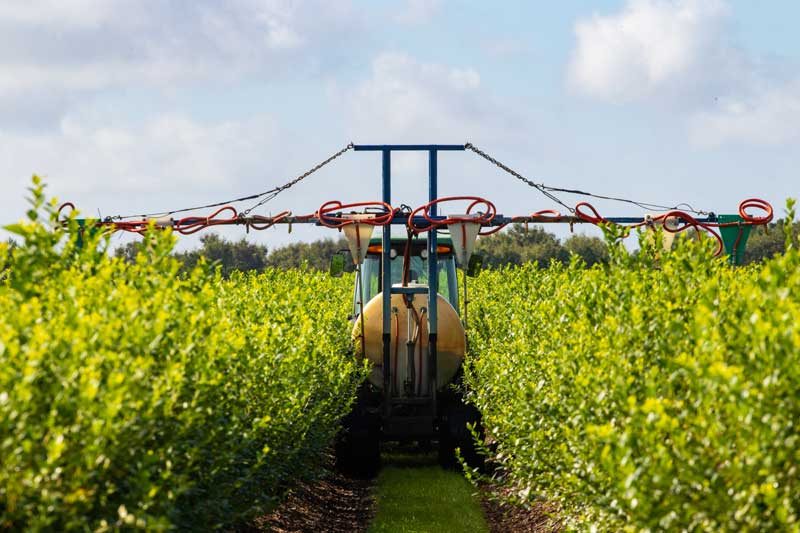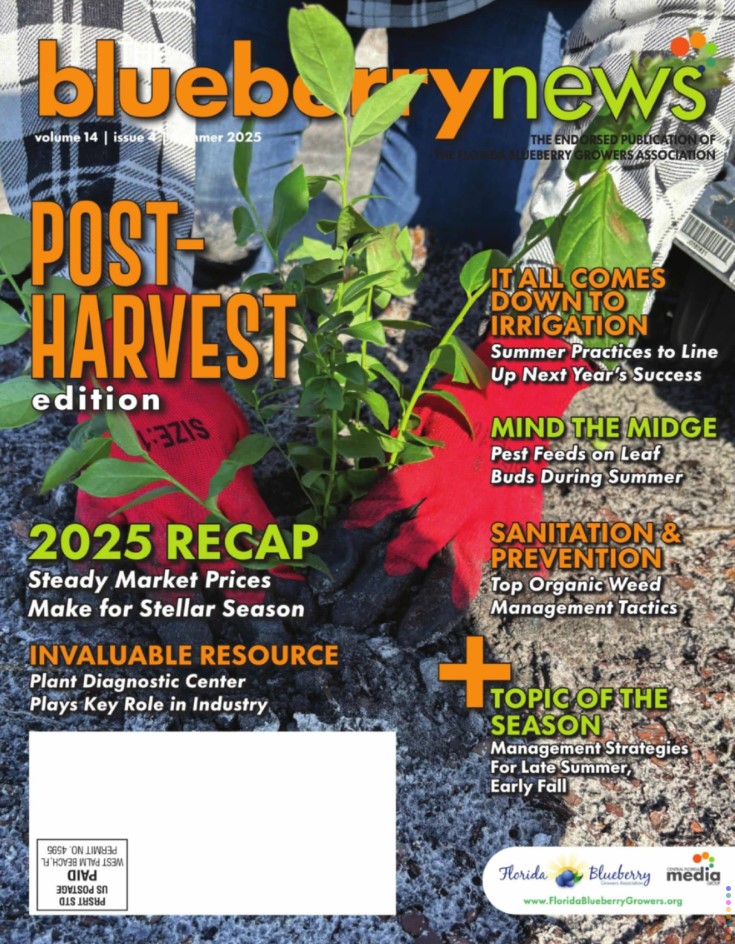Years of Research on Blueberry Sprayers Gives Growers Invaluable Insight
by MARY TOOTHMAN
It is very common practice for growers to spray blueberry crops with insecticides, but experts say if they are going to spray blueberries, they best do it right.
Several years ago, growers expressed concerns to blueberry experts about how to get the best results. Years of careful research went underway.
Extension agents held field days, gave demonstrations, and organized workshops.
Extension Agent Renee Allen says results from research and studies she has conducted over the past few years on blueberry sprayers with the help of colleagues and other professionals in the blueberry business has enabled farmers to improve the effectiveness of sprayers.
Research and field work has uncovered some problematic quirks, along with positives, resulting in time and money being saved by growers.
In addition to cutting product costs and reducing manpower, making the most of sprayers has the ability to boost berry quality.
Allen, who is with the University of Georgia (UGA) Extension, has researched and studied sprayers along with colleagues UGA agricultural engineer Dr. Glen Rains and UGA fruit pathologist Dr. Phil Brannen. In turn, they have collaborated with growers and county agricultural agents to learn all they can about blueberry sprayers. These professional blueberry experts have joined forces in an ongoing effort to provide blueberry growers with knowledge of improved spraying techniques to enable them to better manage crops.
Allen observed that while a wide variety of sprayers were available several years ago, little data was on hand to help in decision-making when looking to buy a sprayer.
Some points to ponder included: What kind of coverage is the sprayer getting? Is it efficacious? Where are pests located?
The coverage results of several different sprayers were identified during field day. Types of blueberry sprayers used in demonstrations included an airblast sprayer, cannon sprayer and boom sprayer.
Goals for field day included:
- Compare coverage among commercial and grower-modified sprayers.
- Assess droplet size at different locations and orientations within canopy.
- Determine spray coverage in blueberry canopy with operator’s current settings.
- Consider specifics on spray coverage and droplet size.
Interesting results came from of a study that looked at coverage when a sprayer went down every other row middle with an airblast sprayer. Growers felt skipping a row was money-saving, and the spraying still provided great coverage, Allen says.
But that theory was wrong. “You may think you are getting coverage, but in reality row and rows were being skipped,” Allen says. “Growers were spraying every other row, and it was providing little to no coverage.”
Another conclusion made from the alternate row middle spraying study: this method tremendously limits spray coverage on rows that the sprayer does not travel down, even when there is no foliage on the plant.
Increasing and attentive maintenance of equipment used and learning about sprayers also allows growers to have successful pest management options.
Growers need to know what kind of coverage they are getting with their sprayers and what kind of adjustments, nozzles, and maintenance are needed to get the best sprayer coverage for the most efficacious management of insect pests and diseases.
“We found that simply cleaning out nozzles, meshes, and replacing old discs and cores, for example, can go a long way on helping to get the best spray coverage,” Allen says.
Spraying at slower speeds and keeping an eye on the pressure gauge also helps with getting better spray coverage. The incorporation and use of drop-down nozzles on boom sprayers can aid spray coverage as well.
Asked what may be in the crystal ball for blueberry growers and sprayers, Allen was ready with her answer. “I suspect we may start using drones for the applications of sprays.”






